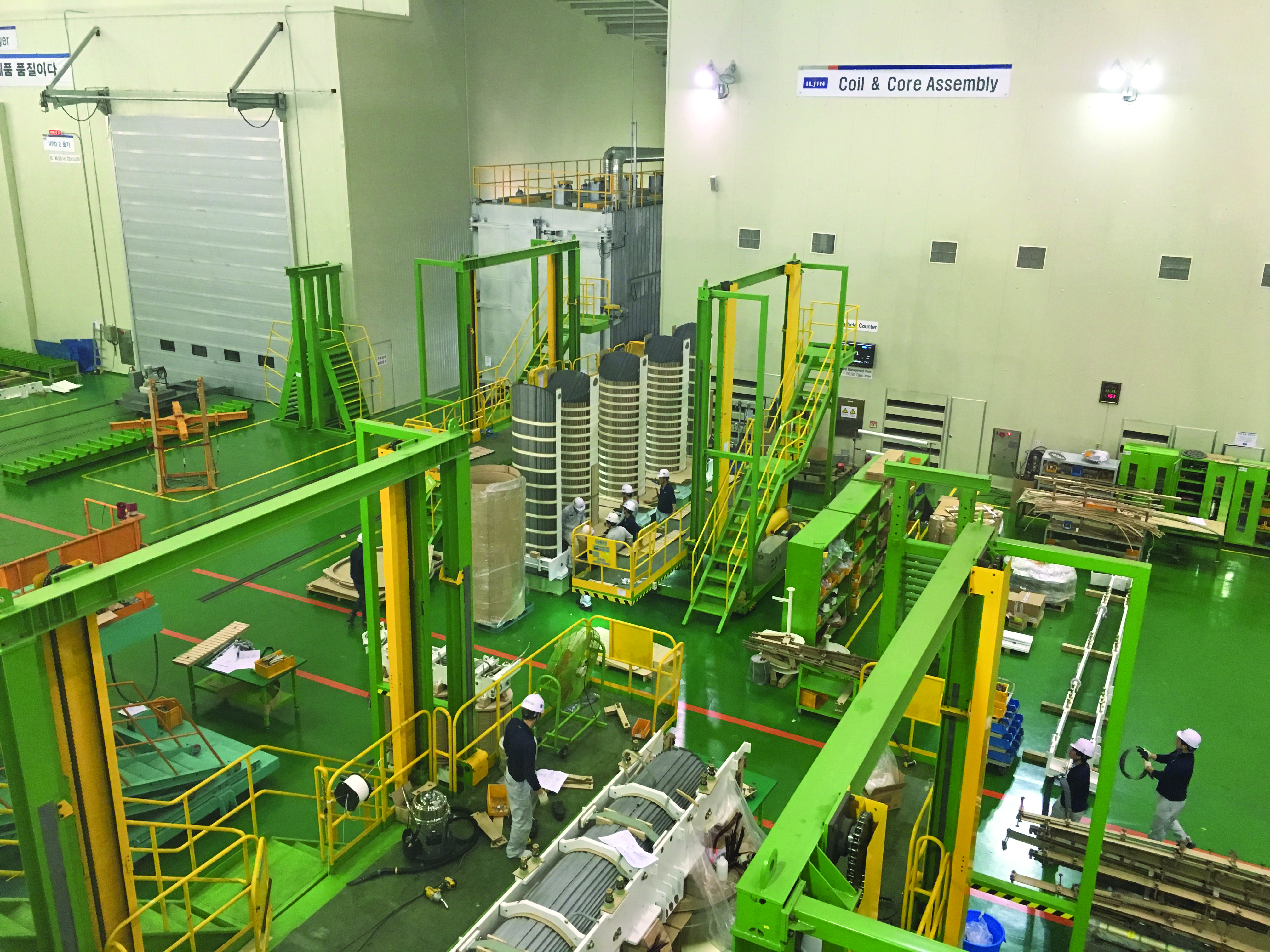IIjin Electric's collaboration with Siemens began with the company's efforts to effectively integrate electrical design with mechanical design. “This collaboration went beyond simply changing tools. It represented a major advancement in the company's design approach and methodology. The introduction of Solid Edge played a critical role in strengthening design standardization and data consistency, which in turn helped to reduce design errors and significantly improve productivity,” said Jung man Yoon, assistant manager, Iljin Electric.
The collaboration has continued to evolve over time and has contributed to IIjin Electric's establishment as a technology leader in the global market. The collaboration with Siemens has been instrumental in speeding IIjin Electric's product development process and strengthening the company's international competitiveness, according to Yoon.

Optimizing the Design Process
In the past, 2D design systems imposed many constraints for Iljin Electric on the efficient collaboration between design and production processes.
“Due to the limitations of 2D drawings, it was difficult to identify interferences in complex mechanical structures in advance, which led to defects in the field and frequent design changes. To address these issues, IIjin Electric introduced a 3D design system, which significantly improved the accuracy and efficiency of the design process. The introduction of a 3D design system played a key role in shortening product development time and improving product quality and reliability,” Yoon said.
Iljin Electric utilizes Siemens Solid Edge in design of key components in the transformer segment which has improved the overall performance and reliability of the products. The development of 3D variable libraries has simplified the design process and made a significant contribution to product quality improvement. Yoon added that these improvements have played an important role in enhancing product performance and reliability.
“Utilizing Solid Edge for 3D design libraries not only provides Iljin Electric with significant advantages in the present, but also promises substantial benefits for the future. This translates into an enhanced ability to accelerate the pace of product development with heightened precision, ensuring a swift response to dynamic market demands,” Yoon said.
The 3D design libraries play a pivotal role in simplifying and accurately resolving complex design challenges, contributing significantly to the optimization of product quality and performance. Additionally, these libraries offer the flexibility needed to meet future design requirements and seamlessly integrate new technologies and materials.

Making the Switch from 2D to 3D-Design
The transition from 2D to 3D involves significant changes in processes and mindset.
“When implementing a new solution, there can be initial challenges. Various support mechanisms, including education and automation, are necessary to address them. From a design perspective, one of the first requirements is the migration of existing data and standardization. This involves determining the target and method for migrating existing 2D files, as well as standardizing properties and templates for CAD assembly and Bills of Material (BOM). Only after completing these migration and standardization tasks can the transition to 3D take place,” said Byung-Joon Oh, country manager and vice president of Siemens Digital Industries South Korea.
Solid Edge provides various methods for migrating existing 2D files. DWG drawings can be opened directly in Solid Edge for use, and it offers commands like "Create 3D" to easily generate 3D models from 2D drawings. Additionally, Solid Edge's Discovery Center offers a range of learning programs, making it easy for newcomers to quickly adapt and use Solid Edge effectively.
“To expedite repetitive tasks and facilitate design changes, we have been developing and utilizing various design automation programs. To develop such design automation programs, standardized model templates are essential. Our engineers work closely with clients, analyzing requirements for design automation, and putting significant effort into creating standardized model templates and developing design automation based on Solid Edge,” Oh said.

Product Organization On-the-Fly
Today's customer requirements are becoming more diverse, leading to increased product complexity. To efficiently release accurate products that align with the rapidly changing demands of customers and the market, standardized design processes, product templates, and properties are crucial.
“Solid Edge achieves standardization in usage by utilizing Solid Edge Admin Dialog to uniformly distribute standardized settings and templates. Additionally, Solid Edge provides Solid Edge Data Management, a free tool for drawing management. This data management tool assists in document management within Solid Edge, capturing properties, preventing duplication of files and part numbers, and enabling the correct data to be retrieved faster through fast searching and where-used queries,” Oh said.
Many companies are using NX Mechatronics Concept Designer (MCD) and Process Simulate for virtual commissioning. Solid Edge can export Solid Edge Motion Kinematics to NX MCD and Process Simulate using PLMXML and JT. Leveraging Solid Edge models for virtual commissioning enables engineers to enhance product performance by adopting the next-generation manufacturing process.
“Solid Edge also includes access to Teamcenter Share, a cloud-based collaboration solution that enables shopfloor users to access the data they need including specification sheets, 2D drawings and 3D assembly models,” Oh said.
Additional Content:
"Solid Edge 2024 Focuses on Performance and User Experience," (PTE Feb 2024)
powertransmission.com/articles/9652-solid-edge-2024-focuses-on-performance-and-user-experience
Solid Edge 2024 empowers users to design more intelligently across every aspect of product development:
youtu.be/Xc-ddD3aliA?si=8WlPYRh6X_gJB1lP







